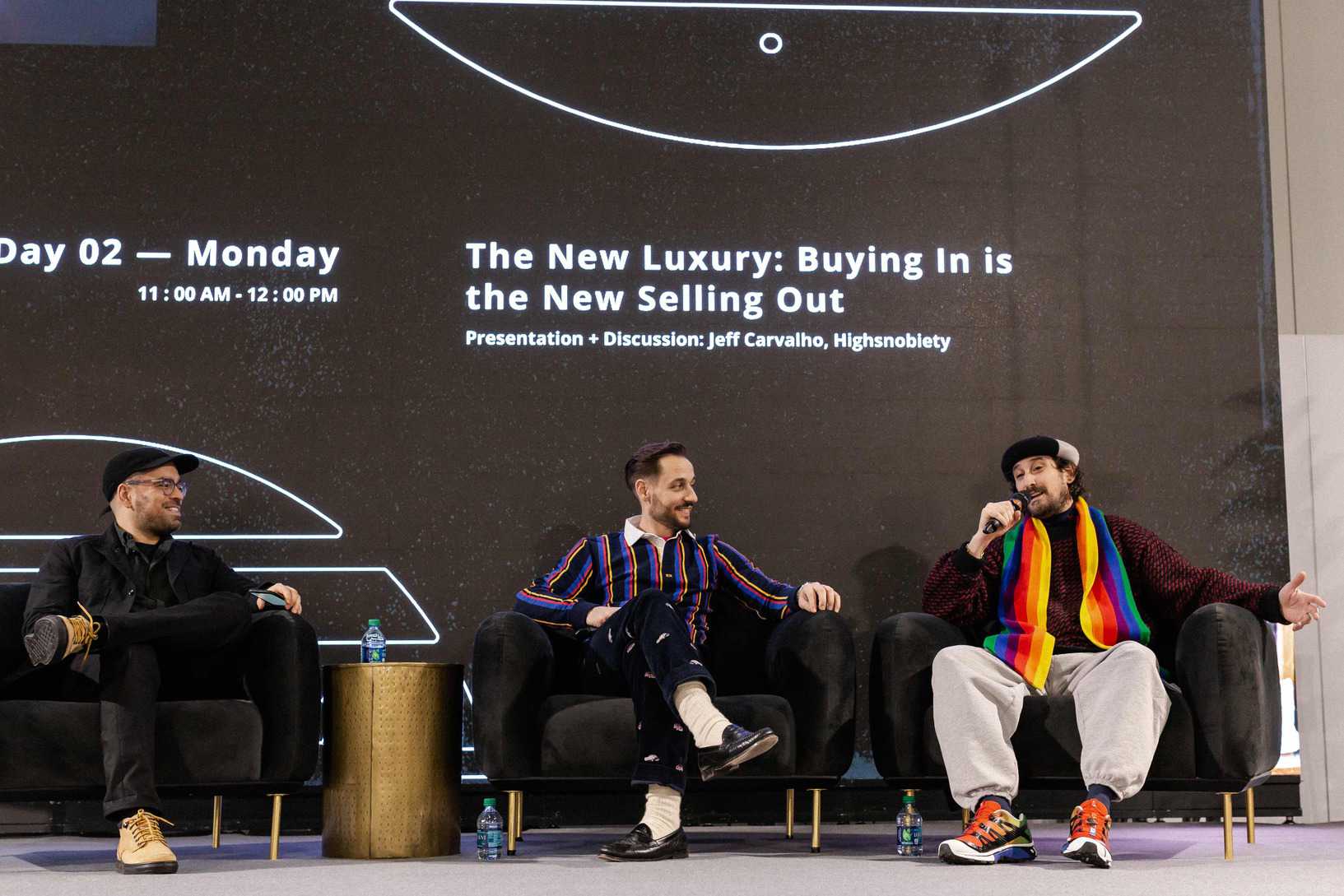THE NEW LUXURY CUSTOMER: ENIGMATIC, PROBLEMATIC, YOUR FUTURE

One of the best seminars we’ve attended at a trade show in a long time (thank you Project NYC), “The New Luxury”, presented by online streetwear publication Highsnobiety was interesting, provocative and backed by a global sampling of about 5,000 (4,984 to be exact) 16 to 34-year-olds. Presented by Highsnobiety’s Jeff Carvalho, WGSN’s Brian Trunzo and Mordechai Rubinstein (aka Mr. Mort), the seminar focused on how retailers can maximize their investment in a new kind of luxury business that is street-inspired, more democratic, and very different than what was.
A few points from the panel that came across loud and clear:
**The new luxury is more a mindset than a purchase, more a mental attitude than physical possessions.
**The paradigm is shifting from exclusivity to inclusivity.
**However, the more limited the access, the more hoops to jump through to get it, the more valuable the product. (Editor’s note: This doesn’t sound like inclusivity to me…)
**Artisanal has shifted to artistic, creative, individualized.
**Today’s brands must stand for something beyond fashion.
**Product longevity is not essential to today’s luxury: Young designers appreciate selling out and moving on; they understand that everything has a life cycle.
And life cycles can be short, as Rubinstein explains. “Young shoppers can go into Barneys, try on an expensive item they love, take a selfie and that’s enough for them. They don’t have to actually buy it because they’ve already experienced it. They have the photo to prove it.” (Note to retailers: when you see this happening on your selling floor, have your sales associates ask the customer to at least tag your store in their posts.)
Rubinstein goes on to reinforce the message that kids don’t need to own anything today, that the difference between real and digital doesn’t matter much to younger generations because digital is their reality. (My question: if young people are not actually buying anything but merely posting photos, how do retailers stay in business?)
Brian Trunzo, senior consultant to WGSN who worked on the research for Highsnobiety, explains that for a long time, luxury designers refused to accept designs from young creatives, but this has now changed. According to Highsnobiety research, the new luxury brands, in order, are: Balenciaga, Gucci, Nike, Louis Vuitton, Off-White, Calvin Klein, Prada, Raf Simons, Stone Island and Yeezy. “For years, runway and street were not allowed to co-exist but gradually, less expensive items became luxury and the locked door to luxury opened up,” says Trunzo.
Jeff Carvelho, managing director of Highsnobiety, points out that more than a third of his readers have purchased a piece of clothing/shoes/accessories costing more than $500 in the past year and that most see these purchases as a way to convey a value system they share with like-minded consumers. In fact, there was much talk from the panel about shared values—that traditional luxury was about aspiration whereas the new luxury is about inspiration, about brands that inspire people to live a better life. If this turns about to be true, then kudos to those brands inspiring young people to give back, conserve and make the world better.
For what’s better than that?



Karen you asked all the right questions and i question the realistic premise of these observations from the panel.
In a recent lecture I gave at the University of Baltimore, I began with the following statement, “Webster’s’ dictionary (yes, it is still around) defines luxury as, “Enjoyment of comforts and pleasures in addition to those necessary for a reasonable standard of well-being.” Obviously, this of course begs the question whose standards? Oscar Wilde is quoted as saying, “My tastes are very simple; I only want the best!” So does that make his necessity someone else’s luxury?” The English language is often corrupted for example :BESPOKE” is no longer an exacting and time taking process to make a single garment for a single individual; “Luxury” is now a different label on the same product with a 20% surcharge; bought is now “Curated”; and “Personalization” is a monogram on either a component shirt or off the rack, we can say that our industry has been taken down. It now becomes the job of every retailer, not to search out the best product she/ he can put into the store, but lacking that just the appropriate buzz word. THIS IS NOT ACCEPTABLE TO LUXURY BUSINESSES. Now the paradigm has changed; A $2 avocado at Whole Foods may be considered a luxury purchase, yet the same avocado sold at Safeway for the $1.98 will not. So what is luxury, well In his epic poem Andrea Del Sarto, Robert Browning wrote, “ A man’s reach must exceed his grasp, or what’s a heaven for.” We are all striving for the best, but that should really be THE BEST- that’s luxury